Perched high above Sicily’s western coast, Erice feels like a medieval treasure frozen in time. Last summer, I wandered those cobblestone streets and, honestly, got swept up by the mix of history, jaw-dropping views, and pure Sicilian charm.
This enchanting hilltop town invites you in with defensive walls, a historic castle, and panoramas that stretch all the way across the Mediterranean.
Getting to Erice is half the fun. You can take the cable car from Trapani or drive up a winding mountain road—both options are pretty memorable.
As you head up Mount San Giuliano, the modern world just kind of slips away. Suddenly, you’re surrounded by medieval buildings, Arab-inspired courtyards, and old piazzas that haven’t changed much in ages.
What makes Erice stand out for me is how it blends its deep history with real, everyday Sicilian life. Between visits to ancient churches and the Norman Castle, I stumbled upon pastry shops selling almond sweets made from convent recipes.
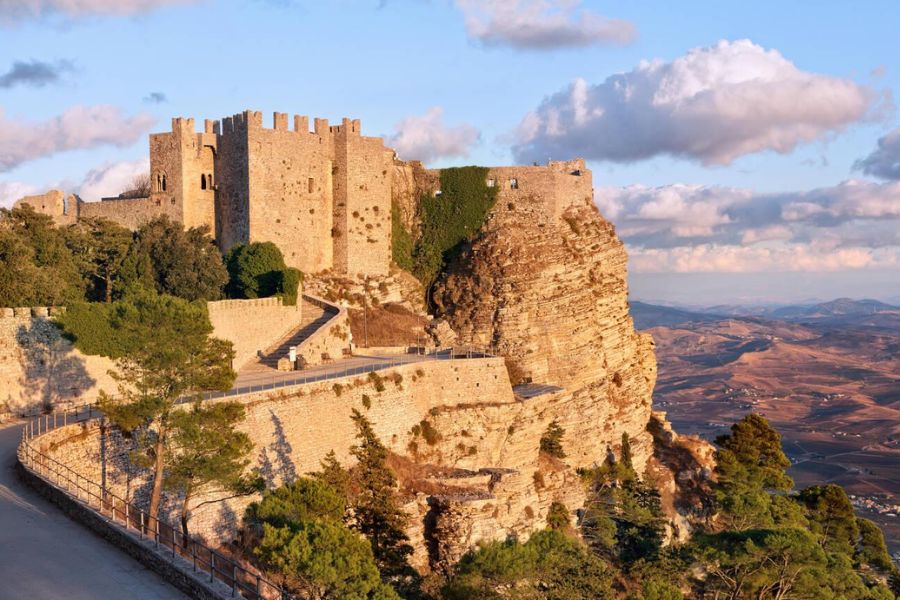
The morning fog, which locals call the “kisses of Venus,” wraps the town in mystery and makes every visit feel like you’ve stepped into a fairy tale.
Getting to Erice: Practical Information
Erice sits 750 meters above sea level on Monte Erice, showing off stunning views of western Sicily. Depending on where you’re coming from, you’ve got a few ways to get here.
How to Reach Erice
I’ll admit, I expected reaching Erice to be tricky, but it’s not bad at all. If you’re starting in Trapani, hop on the cable car—it runs daily unless it’s super windy.
The ride takes about 10 minutes, and you’ll get some killer views of the coast.
If you’re coming from Palermo, driving is your best bet. It usually takes around 1.5 to 2 hours, and the road up the mountain is full of sharp turns. Not for the faint of heart, but it’s scenic for sure.
Public buses connect Erice with Trapani and some other Sicilian cities, but the schedules can be a bit unpredictable. Double-check the latest times before you go.
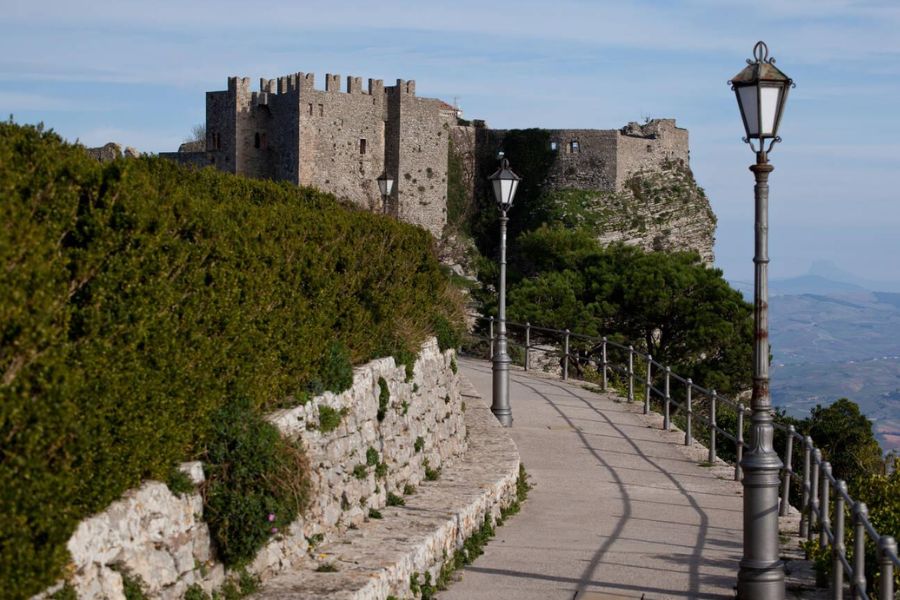
If you’re just here for the day, you can park at the cable car station in Trapani or in lots near Erice’s gates if you decide to drive all the way up.
Best Time to Visit
I’ve been to Erice in all sorts of seasons, and honestly, timing makes a difference. Summer (June through August) brings crowds and heat, but Erice stays cooler than the coast.
Personally, I love late September and October. Fewer tourists, comfortable weather, and you can wander the streets without bumping elbows.
Winter turns Erice into something out of a storybook, especially with fog drifting through the old streets. Some places close or shorten their hours, though, so keep that in mind.
Go in the morning for the clearest views—afternoon fog sometimes rolls in, especially in spring and fall.
Where to Stay in Erice
I’ve spent a few nights in Erice, and I always suggest it if you can swing it. Once the day-trippers leave, the town transforms into this peaceful, almost magical spot.
Several boutique hotels fill restored historic buildings inside the walls. Hotel Elimo and Torre di Pepoli are my favorites—they’ve got real character but don’t skimp on comfort.
Budget travelers can find B&Bs and guesthouses with plenty of charm. Local hosts often share their own tips, which I always appreciate.
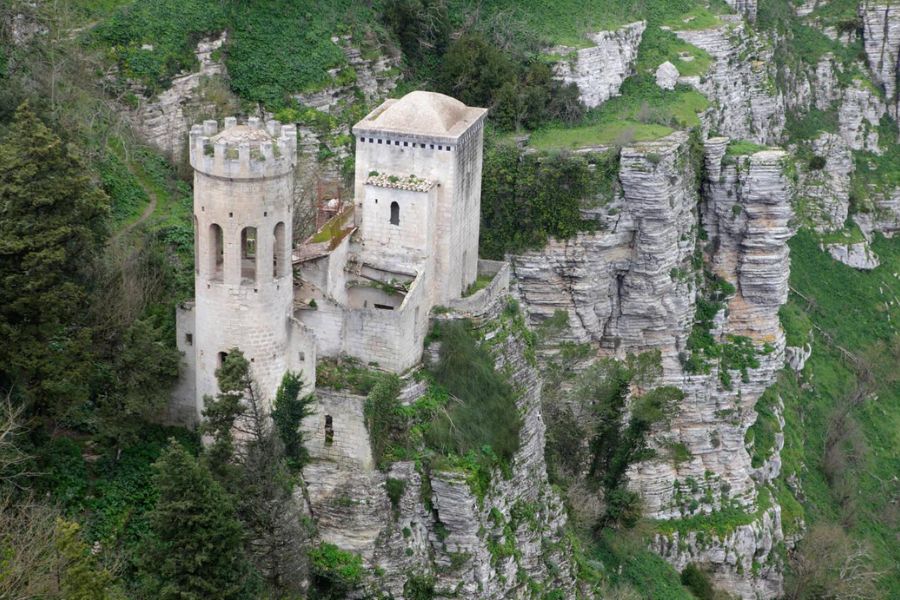
If Erice’s hotels stretch your budget, stay in Trapani. It’s an easy day trip, and you’ll have more food and lodging choices. The cable car makes popping up to Erice a breeze.
Lots of travelers combine Erice with other western Sicily highlights like San Vito Lo Capo or Segesta.
A Walk Through Erice’s Timeless Streets
Walking through Erice feels like time travel. The ancient stone paths and medieval buildings create an atmosphere you just don’t find anywhere else in Sicily.
Every corner reveals a new piece of history.
Medieval Charm and Architecture
The medieval vibe in Erice grabs me every visit. Founded over two thousand years ago, this hilltop town has kept its original layout impressively intact.
The Chiesa Madre, a Gothic church from the 14th century, stands out as one of the most striking buildings here.
Exploring the Norman Castle (Castle of Venus) always makes my day. They built it on top of ancient ruins once dedicated to Venus, and the views of the coast are just unreal.
On clear days, you can spot the Egadi Islands in the distance.
Erice’s architecture blends Norman, Arabic, and Spanish styles. You’ll see it in the arched doors, detailed stonework, and fortress-like houses everywhere you look.
Ancient Stone Buildings
The old buildings here have stories to tell. Most are made from local gray limestone, which gives Erice its unique look.
I love how the stones seem to shift color as the light changes throughout the day.
Many homes have small interior courtyards—a classic Mediterranean touch, but with a Sicilian twist. The thick stone walls keep things cool during those blazing summer days.
Religious buildings dominate the skyline. Besides Chiesa Madre, check out the Church of San Martino and San Giuliano. Both show off incredible medieval craftsmanship and art.

You’ll still spot parts of the ancient defensive walls circling the town, hinting at Erice’s historic importance.
Cobbled Streets
The narrow cobbled streets form a kind of magical maze. Cars can’t really get through, so exploring on foot is the way to go.
Some of my favorite routes are Via Vittorio Emanuele and Via Cordici. You’ll find shops selling local ceramics and those famous almond pastries from the Monastery of Santa Maria.
Every so often, the streets open up into little piazzas. Piazza San Domenico is a personal favorite for sitting and soaking in the view.
These winding paths once confused invaders and sheltered locals from strong winds. Now, they set the stage for the best walks—especially early or late in the day when things quiet down.
History and Legends of Erice
Erice’s story stretches back thousands of years, with layers of civilization and myth woven into every stone.
The town’s history is packed with legends tying it to ancient gods and epic heroes.
From Phoenician Origins to Normans
The Phoenicians kicked things off here around the 8th century BCE. They built a sanctuary for Astarte, their goddess of fertility and love.
Later, the Elymians—one of Sicily’s native peoples—expanded the settlement and called it Eryx. The mountain-top location made it both easy to defend and a powerful religious site.
The Normans arrived in the 12th century and left a big mark. They built the Castle of Venus on the old temple ruins and added several churches.
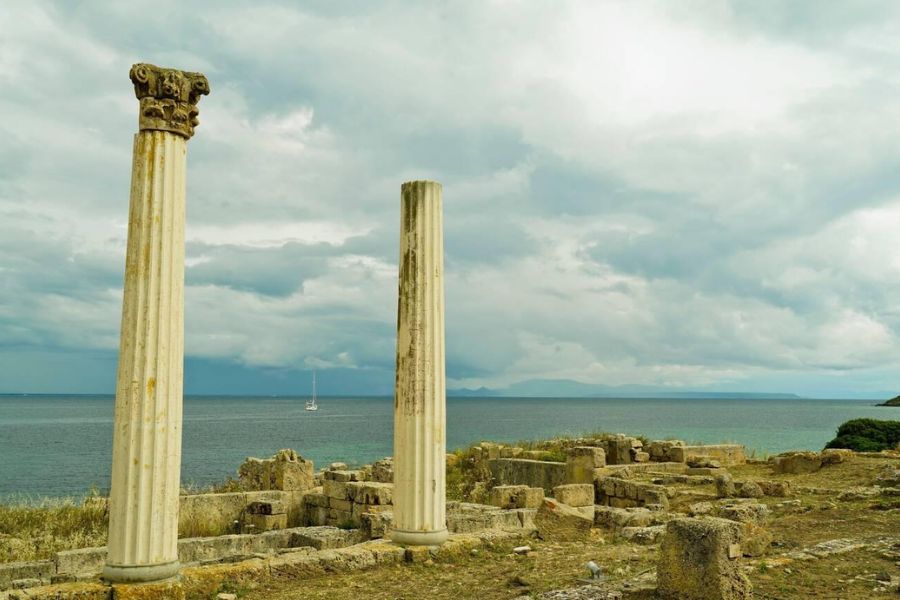
You can still see their influence in the town’s medieval core.
The Normans also laid out the town’s narrow, winding streets. That layout hasn’t really changed since.
Carthaginians, Greeks, and Romans
Carthaginians took control for centuries, drawn by the strategic mountain perch. They maintained the temple, now dedicated to Tanit, their goddess.
Greek traders brought their own culture and linked the local goddess to Aphrodite. That connection made Erice famous as a sacred spot.
The Romans showed up in 241 BCE after the First Punic War. They renamed the goddess Venus Ericina and expanded her temple, making it legendary across the Mediterranean.
Writers like Virgil and Diodorus Siculus wrote about Erice, securing its place in ancient literature and myth.
Mythology and Local Lore
Erice is thick with legends. One story says Eryx, the son of Venus and King Butes (or sometimes Poseidon), founded the town.
Another myth tells how Hercules wrestled Eryx here and took over the territory, at least for a bit, before moving on.
Locals say sacred doves once flew from Venus’s temple to Africa and back, marking the goddess’s journey to Libya each year.
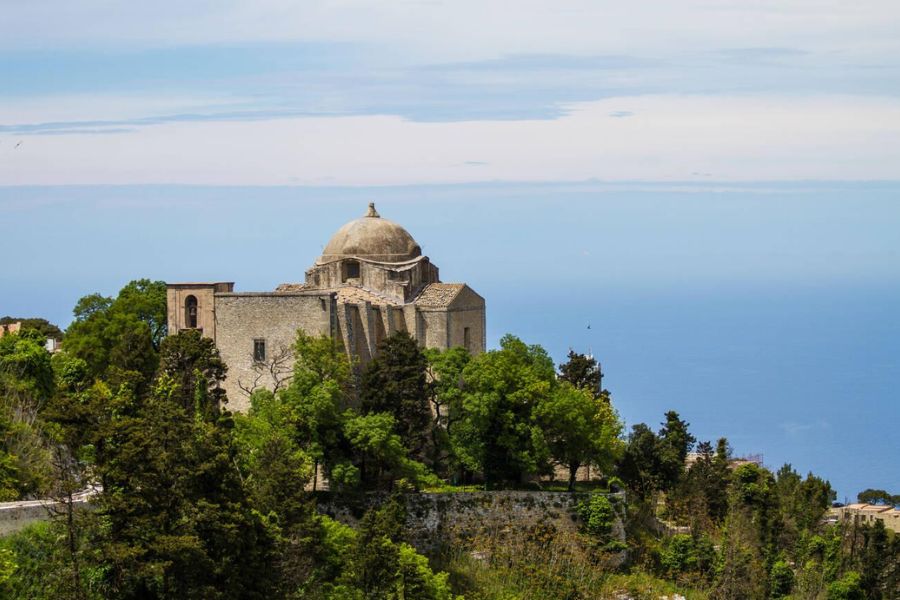
There’s also a tale that a protective mist would hide Erice from enemies during times of danger. Even now, the fog rolls in, keeping that mystical vibe alive.
Byzantines, Arabs, and Spanish Influence
After Rome’s fall, the Byzantines took over. They brought Eastern Orthodox traditions into local religion and art.
The Arabs arrived in the 9th century, renaming the town Gebel-el-Hamid. They introduced new farming methods, irrigation, and architectural styles.
The Spanish came in the 15th century and called the town Monte San Giuliano. Their rule lasted a long time and brought baroque touches to Erice’s churches and palaces.
During Garibaldi’s campaign in 1860, Erice joined Italy peacefully. The town reclaimed the name Erice in 1934, reconnecting with its ancient roots.
Eating and Drinking in Erice
Erice’s food scene is a treat for anyone who loves Sicilian flavors. You’ll taste fresh ingredients, old family recipes, and sweets that have put this hilltop town on the foodie map.
Traditional Sicilian Cuisine
Restaurants in Erice serve up real Sicilian dishes. Seafood is usually front and center, fresh from the coast and prepared simply to let the flavors shine.
The local pasta dishes stick in my memory. Try busiate—spiral-shaped pasta with pesto alla trapanese (a tomato and almond sauce). It’s a regional classic with a nod to Sicily’s Arabic past.
Lots of places offer amazing views along with your meal. Arancini (fried rice balls) and caponata (sweet and sour eggplant) make perfect starters.
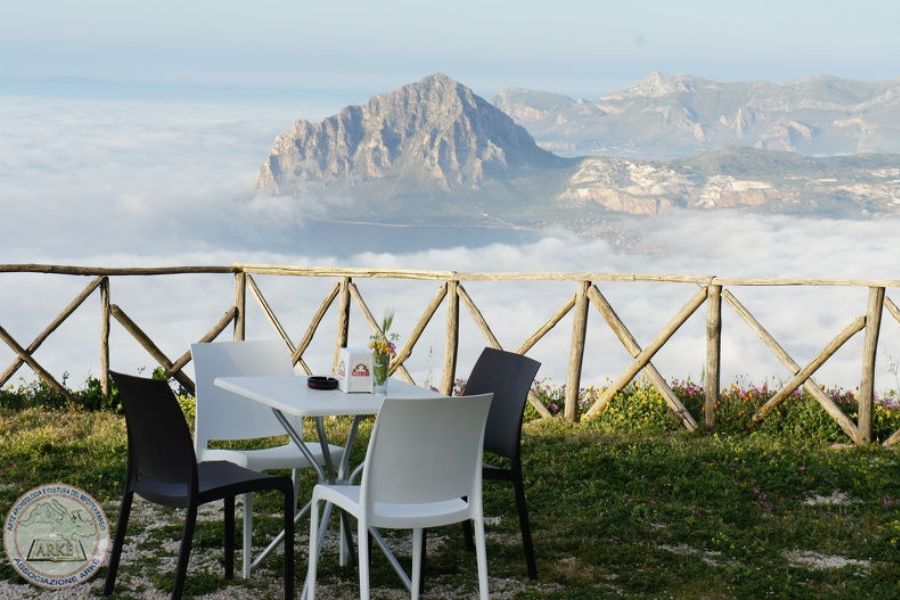
If you’re up for it, try the horse meat. It’s a Sicilian tradition that still has a place in Erice.
Sweet Temptations: Pastries and Chocolate
Erice is a pastry lover’s dream. Maria Grammatico’s pastry shop is legendary—she learned her craft in a convent and now turns out some of Sicily’s best sweets.
The almond pastries are out of this world. Don’t skip the genovesi (custard-filled pastries) or the marzipan fruits that look almost too real to eat.
Chocolate is another local star. Shops here get creative, offering flavors like citrus and chili that you won’t find everywhere.
On chilly days, the thick hot chocolate in Erice’s cafés is pure comfort after wandering those old streets.
Top Foodie Experiences
For a meal you won’t forget, duck into a trattoria hidden down one of Erice’s narrow alleys. The family-run spots usually serve the most authentic dishes.
Must-Try Erice Specialties:
- Cassatelle (sweet ricotta-filled pastries)
- Cuscus alla trapanese (seafood couscous)
- Local wines from western Sicily
- Sheep’s milk cheeses with honey
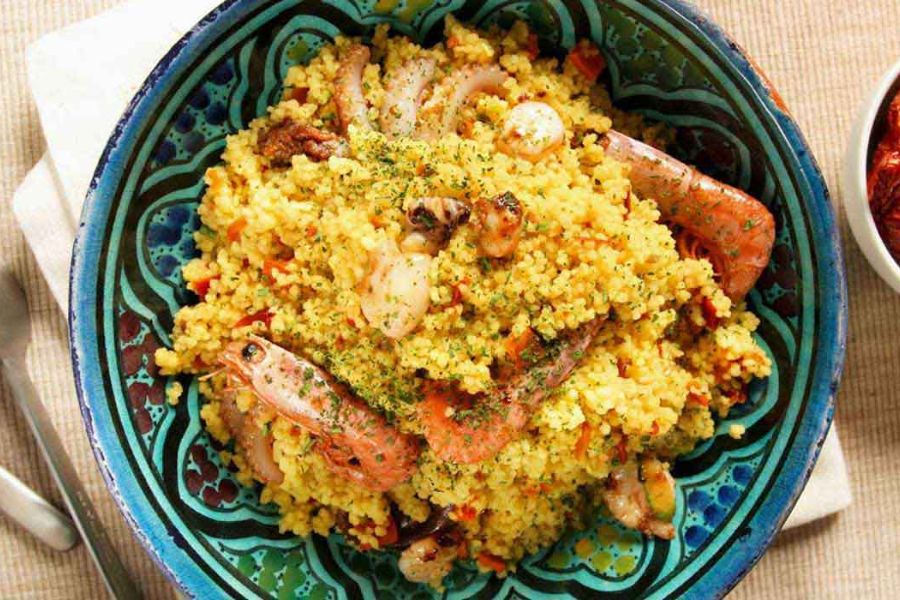
Plan your visit during a festival for special seasonal treats. Around Easter, bakeries fill their windows with unique goodies.
Some restaurants offer cooking classes where you can pick up traditional Sicilian recipes. I took one and still make those dishes at home.
A Taste of Erice: Food Tours and Street Food
Walking food tours are a great way to dive into Erice’s food scene. I joined one led by a local, and honestly, I never would’ve found half those spots on my own.
Street food in Erice is both delicious and easy on the wallet. Look for vendors selling panelle—those crispy chickpea fritters—and sfincione, the Sicilian pizza topped with tomatoes, onions, and breadcrumbs.
You can’t skip gelato in Sicily, and Erice totally delivers. The pistachio and almond flavors really highlight the local ingredients.
If you want to feel like a local, swing by the morning market. Watching the lively exchanges between vendors and shoppers gives you a real peek into daily life in this hilltop town.
Top Things to Do in and Around Erice
Erice brings together cultural gems, natural beauty, and even some seaside escapes. During my visit, I found plenty of things to do that show off the town’s medieval charm and the gorgeous landscape all around.
Cultural and Historical Sites
The Castello di Venere (Castle of Venus) stands proudly at the top of the mountain. The Normans built it on the site of an old temple to Venus, and the views from up there are just jaw-dropping.
You’ll want to see the Cathedral of Erice too. Its dramatic Gothic architecture and peaceful interior really left an impression on me.
The Bell Tower is another highlight. Climb it for some of the best views in Erice—the small entry fee is totally worth it.
San Giuliano Church holds some fascinating religious artifacts and artwork. I found the detailed mosaics especially beautiful.

Even the narrow, winding streets are an experience in themselves. I spent hours just wandering, stumbling into hidden courtyards and little shops selling ceramics and sweets.
Nature Walks and Wildflowers
Trails around Monte San Giuliano are perfect for hiking, with sweeping views over Sicily’s western coast. In spring and early summer, wildflowers burst into color everywhere you look.
Try the trail from Erice to Torretta Pepoli, a noble little tower perched on the cliff. It takes about 45 minutes and is packed with photo ops.
Nature lovers should check out Riserva Naturale Monte Cofano, just a short drive away. This protected area is home to Mediterranean scrubland and some plants you won’t find anywhere else in Sicily.
Morning fog often wraps Erice in a dreamy mist. I found early walks along the ancient walls especially magical in that soft, hazy light.
Nearby Beaches and Countryside
San Vito Lo Capo beach isn’t far—just a 30-minute drive from Erice. With its turquoise water and white sand, it’s one of Sicily’s prettiest beaches and perfect for a swim after a day in town.
Lo Zingaro Nature Reserve mixes wild beaches with hiking trails. I spent a day there, wandering between quiet coves and swimming in the Mediterranean.
If you’re craving rural Sicily, take a drive through the countryside around Erice. You’ll find family-run farms and vineyards, and many offer tours and tastings of their wines and olive oils.
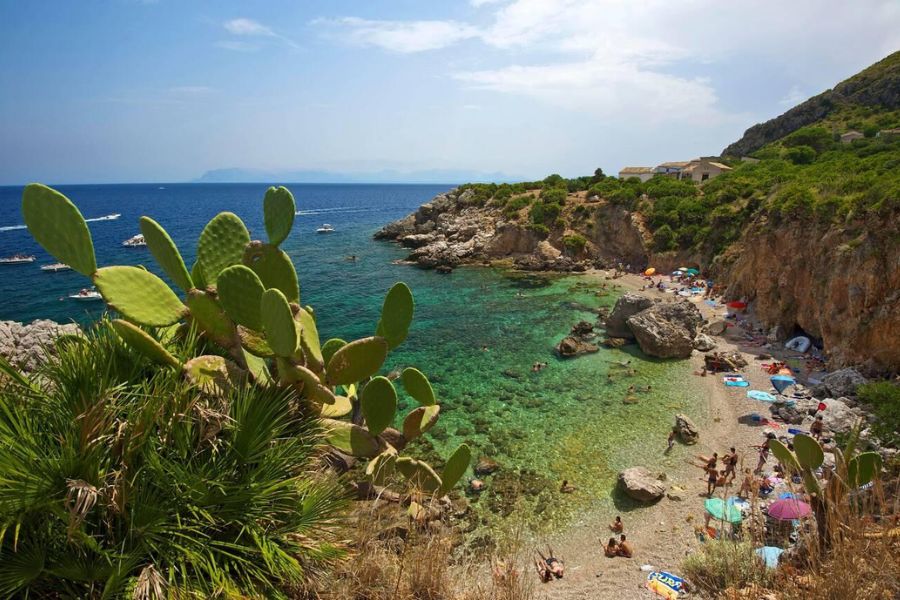
The salt pans of Trapani, dotted with old windmills and pink-tinted water, make for a unique outing. Watching the sunset here, with the colors bouncing off the pools, was honestly unforgettable.
Exploring Western Sicily: Perfect Day Trips
Erice is fantastic, but Western Sicily has so many other places worth a day trip. From ancient salt pans to beautiful islands and top-notch wine regions, there’s something for every kind of traveler.
Trapani and the Salt Pans
Trapani is just a short drive from Erice and mixes coastal vibes with a rich history. The old town has baroque buildings and seaside promenades that are perfect for a morning stroll.
I recommend heading to the Porto Peschereccio, the fishing port, to watch locals haul in their daily catch.
The salt pans (Saline di Trapani) are the real star near Trapani. Shallow pools stretch out in a surreal landscape where people have harvested salt since Phoenician times.
You’ll see pink water and white salt mounds that make for amazing photos, especially at sunset.
The Salt Museum (Museo delle Saline) gives you a look at traditional salt harvesting. Windmills scattered through the salt pans add to the dreamy scenery that’s made this spot a Western Sicily favorite.
The Egadi Islands Adventure
The Egadi Islands (Isole Egadi) sit just off Trapani’s coast and feel like a world apart. Regular ferries make it easy to get there for a day, and honestly, it’s a whole different vibe from mainland Sicily.
Favignana, the biggest island, is famous for its crystal-clear water and hidden coves. I love renting a bike and stopping at Cala Rossa or Bue Marino for a swim.
Levanzo, the smallest, charms you with its white houses clustered around a tiny port. The cave paintings at Grotta del Genovese, which date back 10,000 years, are worth the short hike.
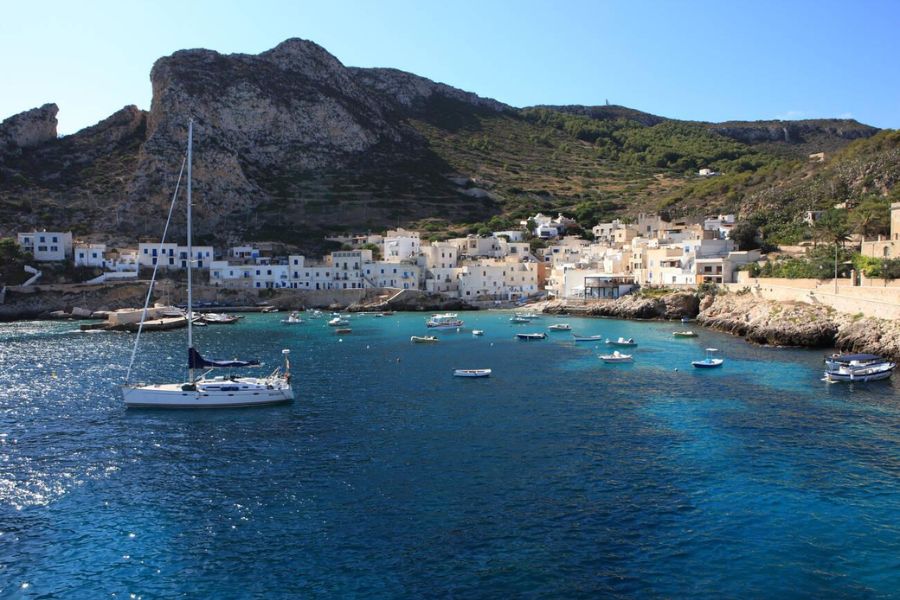
Marettimo, the farthest out, is the place for hiking trails and quiet beaches. Its untouched beauty makes it a top pick for anyone wanting to escape the crowds.
Marsala and Wine Tasting
Marsala—yeah, the place everyone thinks of for fortified wines—brings together a deep, fascinating history and some seriously tasty food moments.
You’ll spot elegant baroque buildings in the historic center, and the Duomo dedicated to St. Thomas of Canterbury stands out.
Wine lovers, don’t skip the classic wineries like Florio or Donnafugata. I really recommend booking a tasting tour—there’s just something about learning firsthand how Marsala’s unique flavors come to life.
Wander through the old cellars; you’ll see these huge oak barrels where the wines age.
But Marsala isn’t just about wine. The salt pans here show off a different side of Sicily’s traditions.
The Stagnone Nature Reserve, with its shallow lagoon and four tiny islands, is honestly gorgeous. If you’re up for it, hop on a boat to Mozia island and check out the ancient Phoenician settlement.
The museum there? It’s packed with fascinating artifacts.

